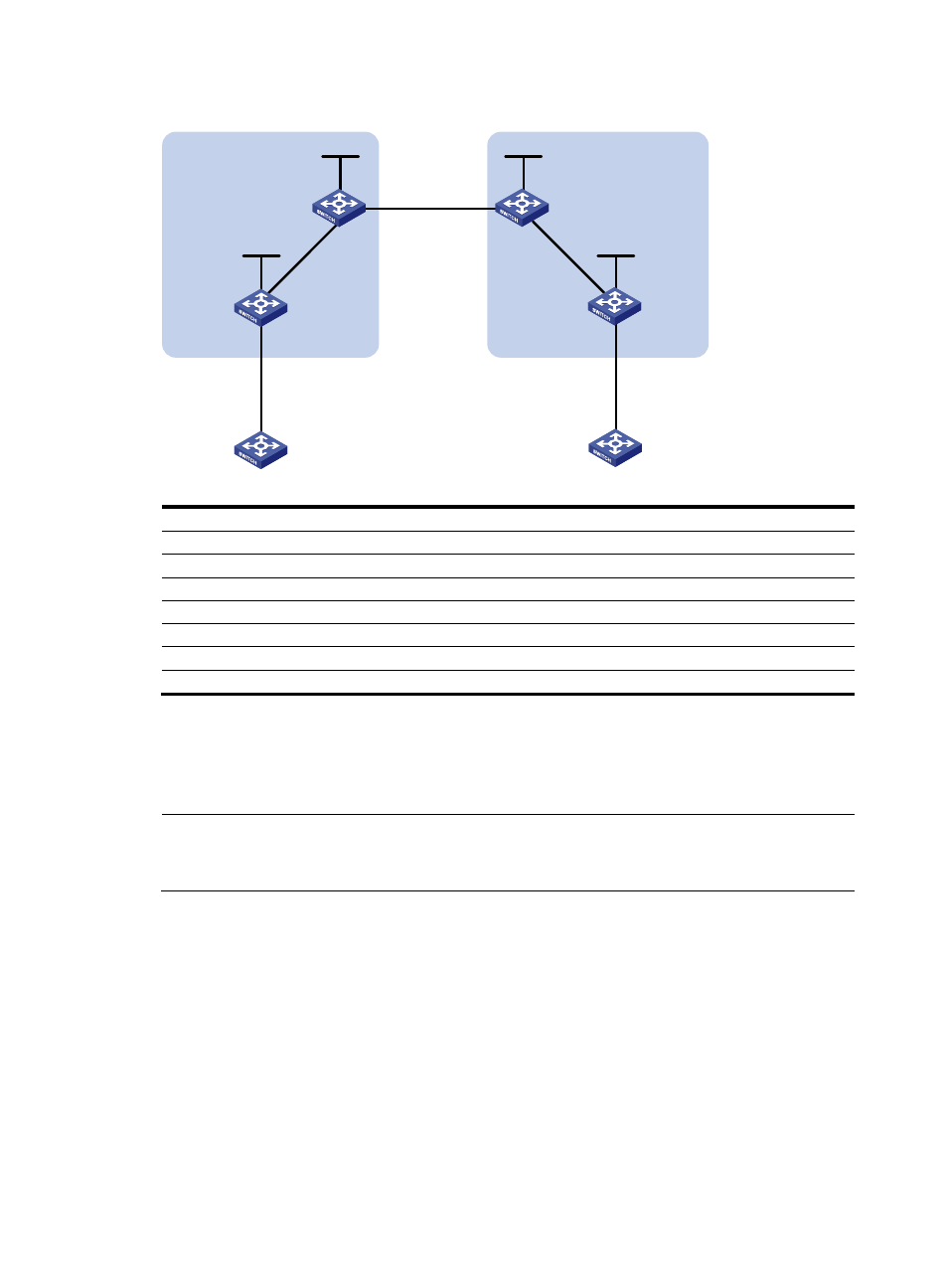Configuration procedure – H3C Technologies H3C S10500 Series Switches User Manual
Page 374

363
Figure 85 Configure inter-AS IPv6 VPN option A
Loop0
Loop0
Loop0
Loop0
Vlan-int12
CE 1
CE 2
AS 65001
AS 65002
PE 1
PE 2
ASBR-PE 2
ASBR-PE 1
MPLS backbone
MPLS backbone
AS 100
AS 200
Vlan-int12
Vlan-int12
Vlan-int12
Vlan-int11
Vlan-int11
Vlan-int12
Vlan-int12
Vlan-int11
Vlan-int11
Device
Interface
IP address
Device
Interface
IP address
CE 1
Vlan-int12
2001:1::1/64
CE 2
Vlan-int12
2001:2::1/64
PE 1
Loop0
1.1.1.9/32
PE 2
Loop0
4.4.4.9/32
Vlan-int12
2001:1::2/64
Vlan-int12
2001:2::2/64
Vlan-int11
172.1.1.2/24
Vlan-int11
162.1.1.2/24
ASBR-PE 1
Loop0
2.2.2.9/32
ASBR-PE 2
Loop0
3.3.3.9/32
Vlan-int11
172.1.1.1/24
Vlan-int11
162.1.1.1/24
Vlan-int12
2002:1::1/64
Vlan-int12
2002:1::2/64
Configuration procedure
1.
Configure an IGP on each MPLS backbone to ensure IP connectivity within the backbone.
This example uses OSPF. (Details not shown)
NOTE:
Be sure to advertise the 32-bit loopback interface address of each router through OSPF. The loopback
interface address of a switch is to be used as the switch’s LSR ID.
After you complete the configurations, each ASBR PE and the PE in the same AS can establish OSPF
adjacencies. Issue the display ospf peer command. The output shows that the adjacencies reach the Full
state, and that PE and ASBR PE routers in the same AS can learn the routes to the loopback interfaces of
each other.
Each ASBR PE and the PE in the same AS can ping each other.
2.
Configure the MPLS basic capability and enable MPLS LDP on each MPLS backbone to establish
LDP LSPs
# Configure the MPLS basic capability on PE 1 and enable MPLS LDP for PE 1 and for the interface
connected to ASBR-PE 1.
[PE1] mpls lsr-id 1.1.1.9
